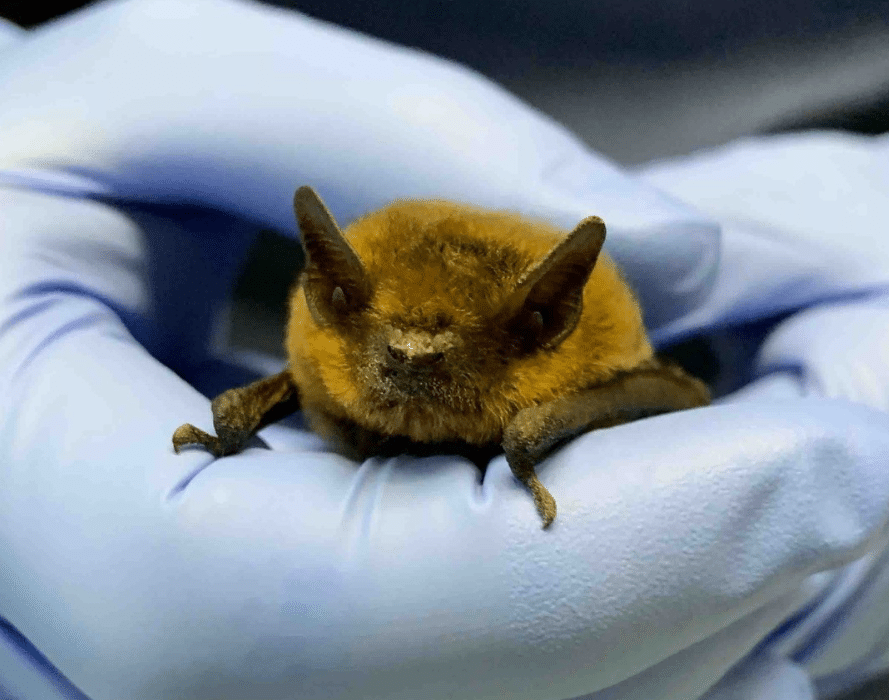In the vast and mysterious realm of the night, few creatures captivate the imagination quite like the pipistrelle bats. These enigmatic mammals, belonging to the Pipistrellus genus, are distributed across the continents, displaying remarkable diversity in both form and behaviour. As we delve into the fascinating world of these aerial acrobats, we uncover their intricate adaptations, unique behaviours, and their role in maintaining ecological harmony.
A Global Spectrum of Pipistrelles
From the ancient woodlands of the UK to the sprawling savannas of Africa, pipistrelle bats have earned their place as one of the most widespread and successful bat genera worldwide. The common pipistrelle (Pipistrellus pipistrellus), a diminutive yet charismatic species, is a prime example of this adaptability. Additionally, other members of the genus, such as the soprano pipistrelle (Pipistrellus pygmaeus), eastern pipistrelle (Pipistrellus subflavus), and the western pipistrelle (Pipistrellus hesperus), contribute to the rich tapestry of bat biodiversity.
Physical Marvels
Beyond their diminutive size lies a treasure trove of captivating physical traits that enable pipistrelles to thrive in their nocturnal habitat. Their wings, spanning 18 to 25 centimetres, are marvels of engineering, allowing them to execute complex aerial manoeuvres while hunting for insects—a staple of their diet. Clad in fur ranging from a warm light brown to a deep reddish hue, these bats seamlessly blend into their surroundings, evading predators and ensuring their survival. Their large, expressive eyes grant them exceptional night vision, while their ears, finely tuned for echolocation, demonstrate their adeptness at navigating the dark expanses of the night sky.
Navigating Darkness
The pipistrelle’s mastery over the night is a testament to their nocturnal lifestyle. As twilight descends, these agile creatures emerge from their roosts, embarking on a meticulously orchestrated quest for sustenance. Central to their nocturnal success is their remarkable ability for echolocation—a biological marvel that underpins their hunting prowess. Emitting high-frequency calls, pipistrelles create an intricate auditory map of their surroundings, allowing them to pinpoint obstacles and prey with extraordinary precision. This exquisite adaptation empowers them to exploit even the densest habitats, ranging from dense woodlands to urban landscapes.
Mating Rituals and Reproduction
Amidst the moonlit darkness, the lives of pipistrelles take a romantic turn during mating season. Their complex mating rituals involve a blend of vocalisations, displays of agility, and the exhalation of alluring pheromones. Male pipistrelles engage in spirited aerial displays to attract potential mates, showcasing their dexterity and stamina. The intricate calls they produce are not only melodious but also carry essential information about their species, health, and vigour. Once a mate is selected, these agile fliers engage in a unique mid-air courtship dance, a mesmerising spectacle that underscores the marvels of the natural world.
The Diet of Pipistrelles
At the heart of the pipistrelle’s diet lies an indispensable ecological role—regulating insect populations. These bats are voracious insectivores, consuming vast quantities of mosquitoes, moths, and other pests that threaten both crops and human health. The common pipistrelle, for instance, stands as a sentinel against insect-borne diseases, contributing to a natural form of pest control that benefits ecosystems and human societies alike.
Habitats and Beyond
Pipistrelles’ adaptability shines through their choice of habitats, spanning from dense woodlands to open grasslands. The common pipistrelle, with its extensive range covering Europe, Asia, and North Africa, exemplifies this adaptability. Meanwhile, in the Americas, diverse pipistrelle species thrive across varying ecosystems, from the eastern United States to the heart of Central America. This broad distribution underscores their ability to coexist with human populations, bridging the gap between the natural world and urban environments.
Challenges and Significance of Conservation
While pipistrelles contribute immensely to ecosystem health, their survival hangs in the balance due to various threats. Habitat loss, stemming from urban expansion and deforestation, disrupts their roosting and foraging sites, jeopardising their populations. Additionally, the emergence of white-nose syndrome—a devastating fungal disease—has taken a toll on bat populations, including the pipistrelles. Urgent conservation efforts are essential to secure their continued existence and the invaluable ecological services they provide.

Advancing Knowledge
The world of pipistrelle bats remains an ongoing field of exploration and discovery. Researchers delve into their behaviours, migration patterns, and echolocation techniques, unravelling mysteries that contribute to the broader understanding of bat ecology. Beyond the realm of science, educating the public about the significance of pipistrelles fosters admiration for these creatures and catalyses efforts to protect their habitats.
In Conclusion
Pipistrelle bats, with their intricate adaptations, astonishing behaviours, and essential ecological roles, serve as reminders of the interconnectedness of all life forms. As we marvel at their nocturnal prowess and their vital contributions to pest control, we are reminded of the urgency to preserve the delicate web of life that sustains us all.
Sam loves to learn about animals and their habitats. He has been a nature lover from a very young age, and has been writing papers and articles about wildlife for as long as he can remember.
